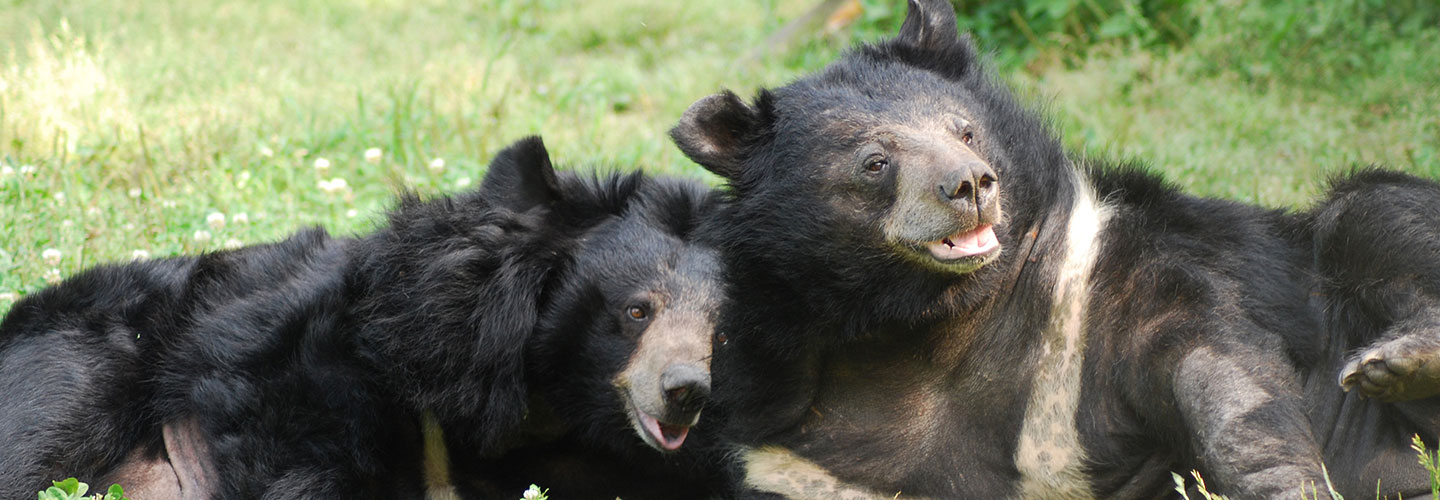Bazan paced in circles, growling softly. It was a spring morning in An Khê, a town in central Vietnam. But the zinc roof over Bazan’s copper cage only made the 90-degree heat worse. Someone had stuck a long spoon with honey through the bars, but the bear was too agitated to notice. A small crowd had gathered in front of her cage, and in Bazan’s experience, that was never a good thing—people often signaled harm.
But the group I was part of that morning had come to rescue Bazan and her friend Wendles. The two Asiatic black bears had spent the past 12 years living side by side in separate cages at the back of a warehouse filled with timber logs, copper pipes, and empty oil barrels. Illegal farms like this exist throughout Vietnam, where more than 1,000 bears still live in captivity.
Moon bears, as they’re often called because of their crescent-shaped tuft of cream-colored chest hair, are prized in some parts of Asia. The bears are snatched from the forest for their bile, a yellow liquid that helps digest fat. Bile has been used for thousands of years in traditional medicine to treat a variety of conditions, ranging from liver problems to sore throats. People who harvest the liquid use needles to extract it from a bear’s gallbladder, the organ that stores bile. The process is a painful one and can severely harm a bear’s health.
Bazan paced in circles, growling softly. It was a spring morning in An Khê, a town in central Vietnam. But the zinc roof over Bazan’s copper cage only made the 90-degree heat worse. Someone had stuck a long spoon with honey through the bars, but she was too agitated to notice. A small crowd had gathered in front of her cage. In Bazan’s experience, that was never a good thing. People often signaled harm.
But this time, people meant help. The group I was part of that morning had come to rescue Bazan and her friend Wendles. The two Asiatic black bears had spent the past 12 years in captivity. They lived side by side in separate cages at the back of a warehouse. They were surrounded by timber logs, copper pipes, and empty oil barrels. Illegal farms like this exist throughout Vietnam. More than 1,000 bears still live in captivity in the country.
Asiatic black bears are also called moon bears because of their crescent-shaped tuft of cream-colored chest hair. They’re prized in some parts of Asia. The bears are snatched from the forest for their bile. Bile is a yellow liquid that helps digest fat. It has been used for thousands of years in traditional medicine to treat many conditions, ranging from liver problems to sore throats. People who harvest the liquid use needles to extract it from a bear’s gallbladder. That’s the organ that stores bile. The process is a painful one. It can severely harm a bear’s health.

